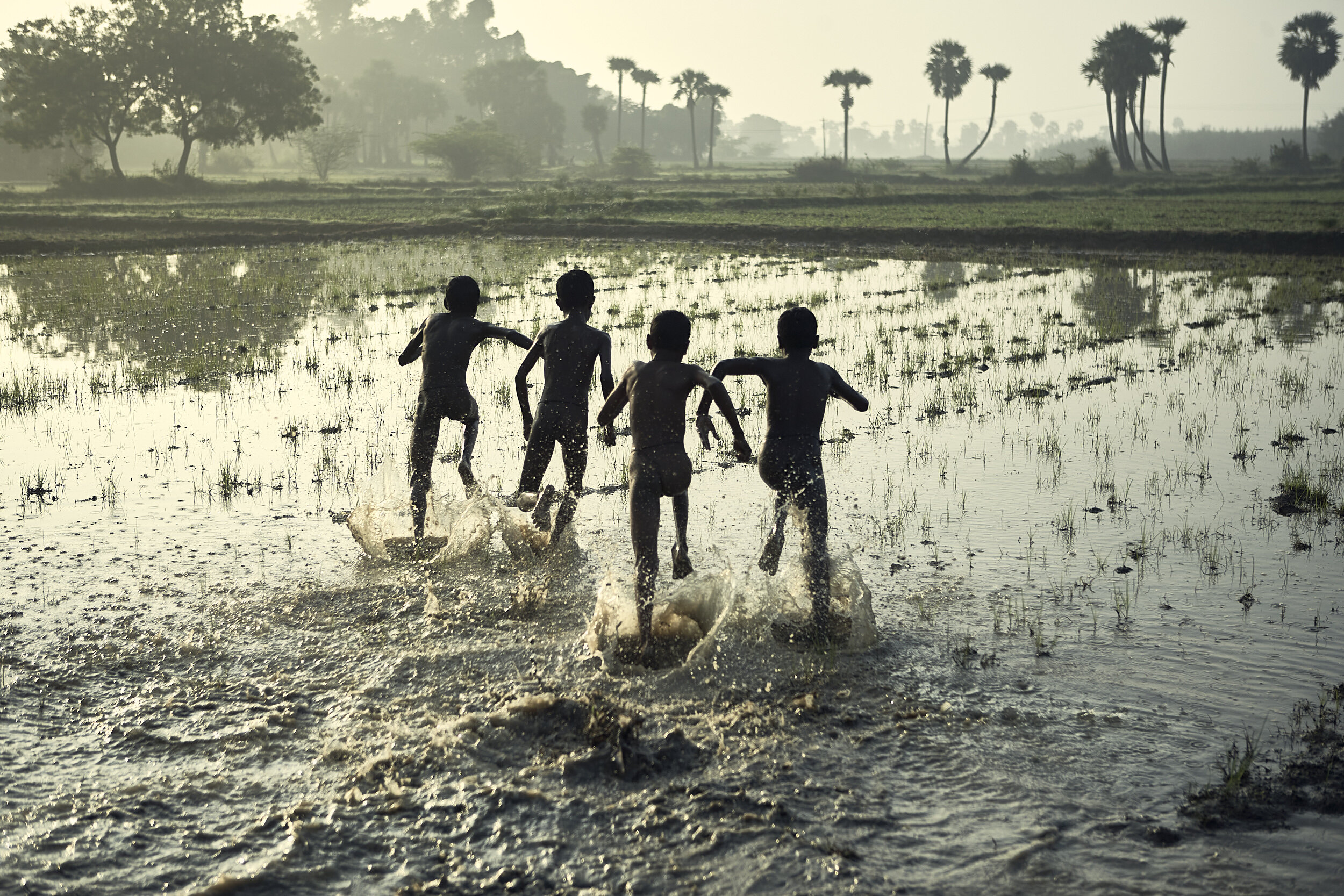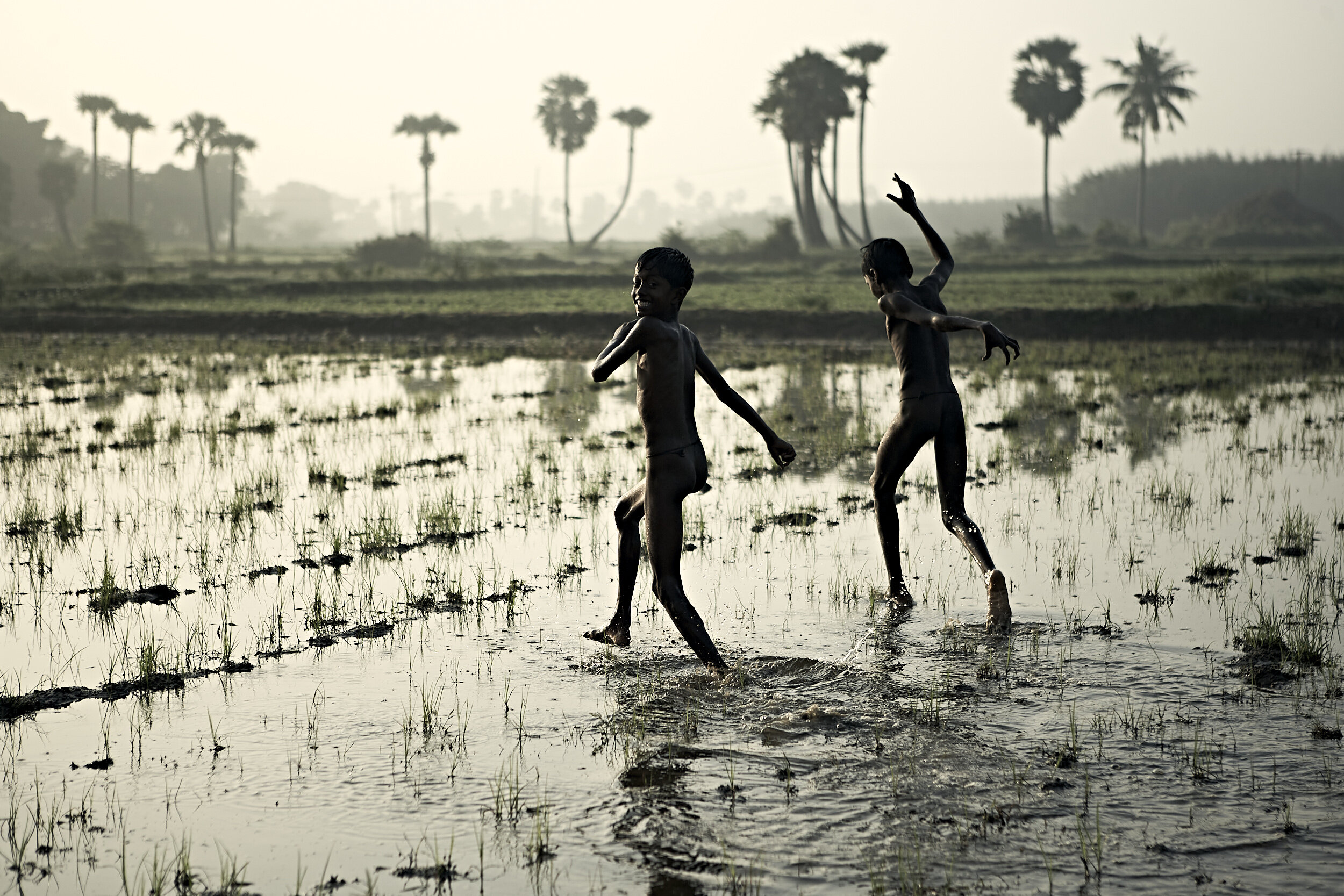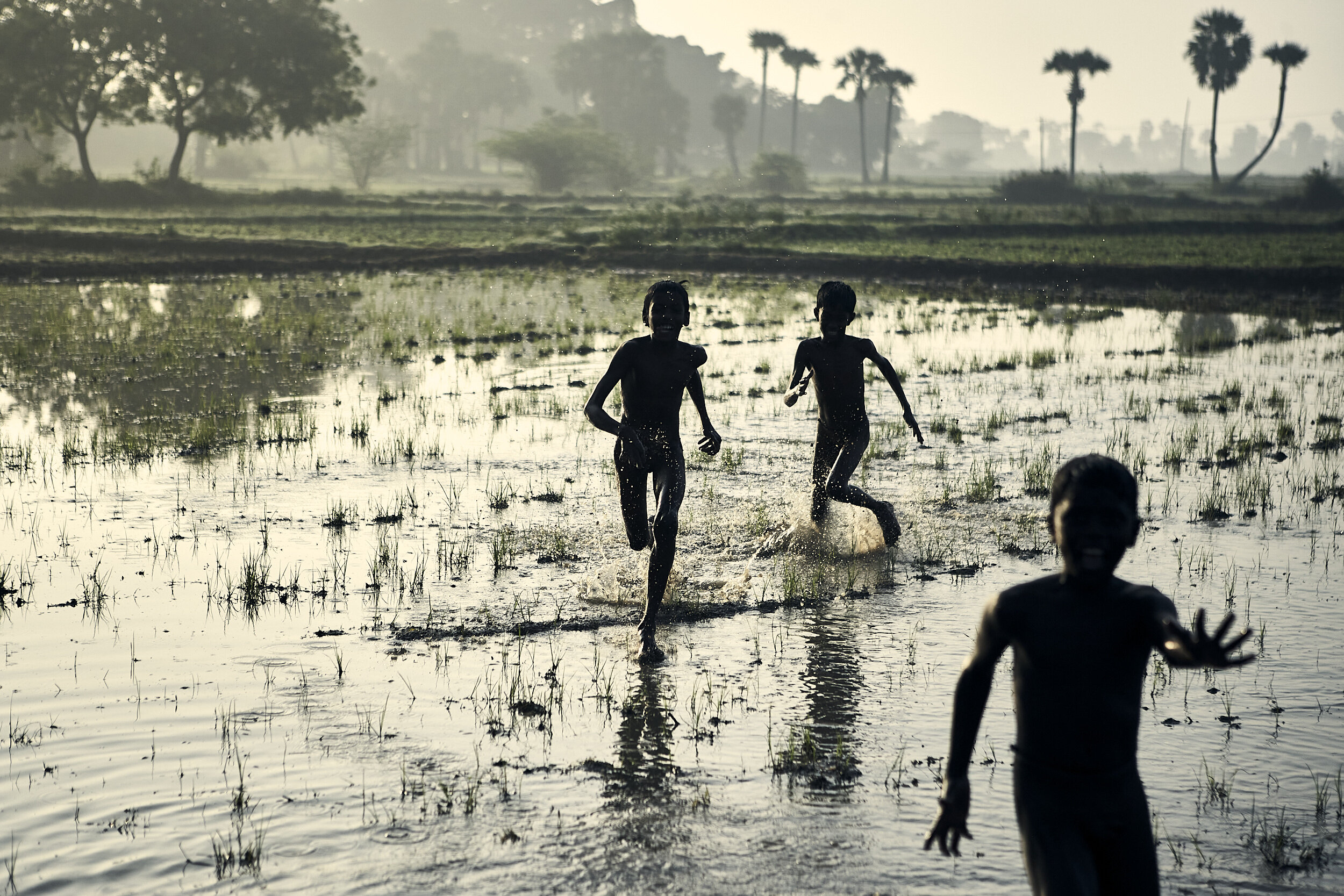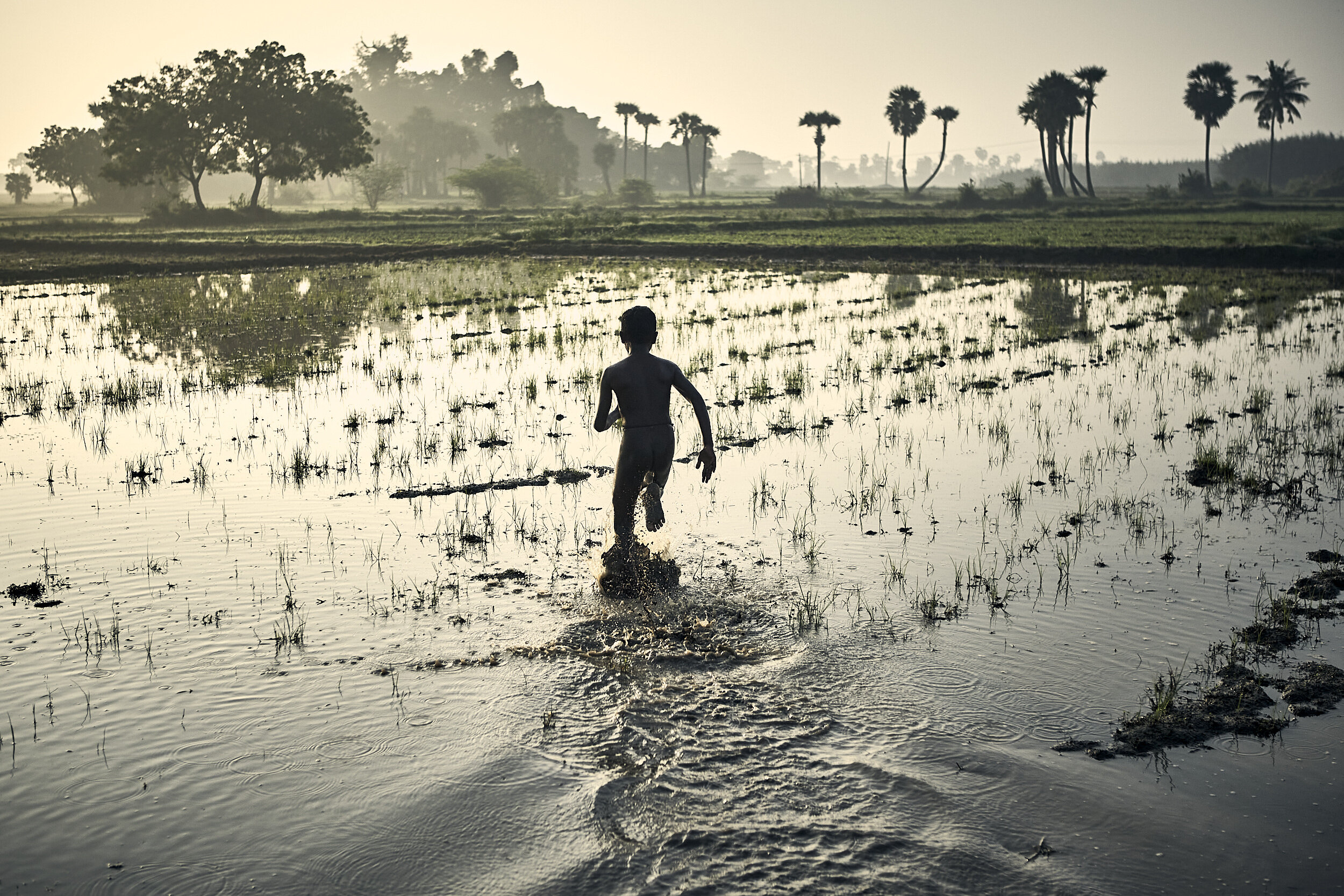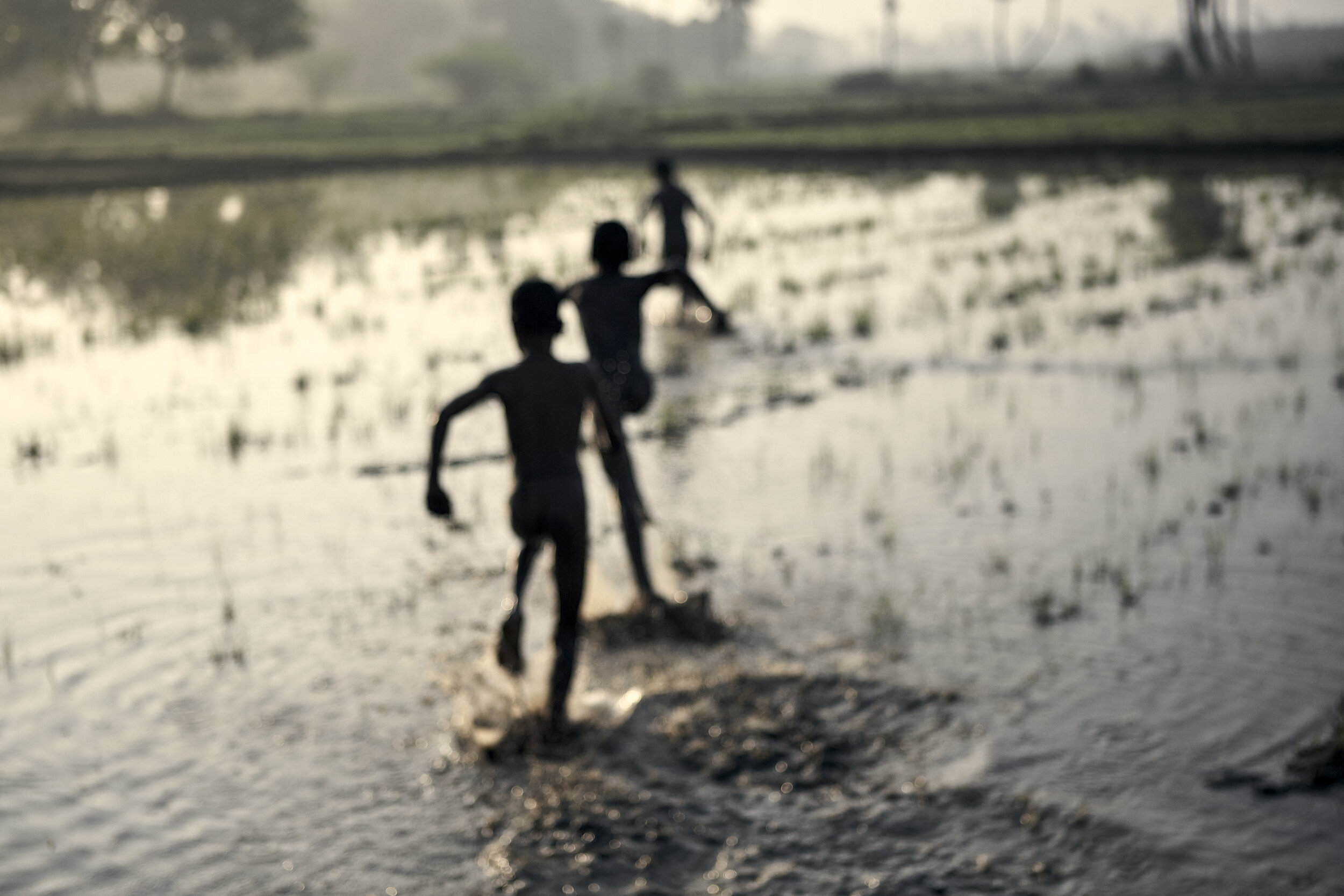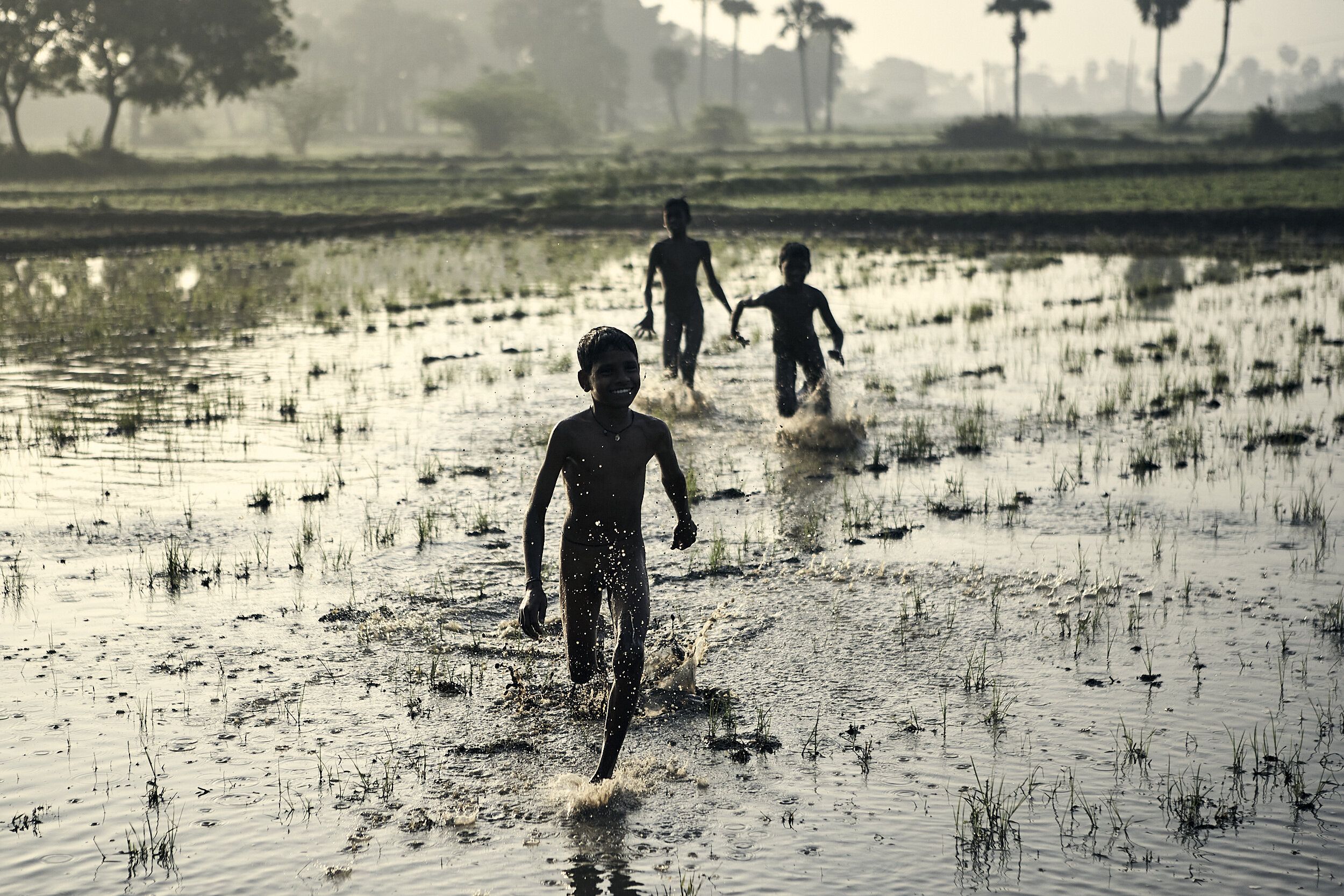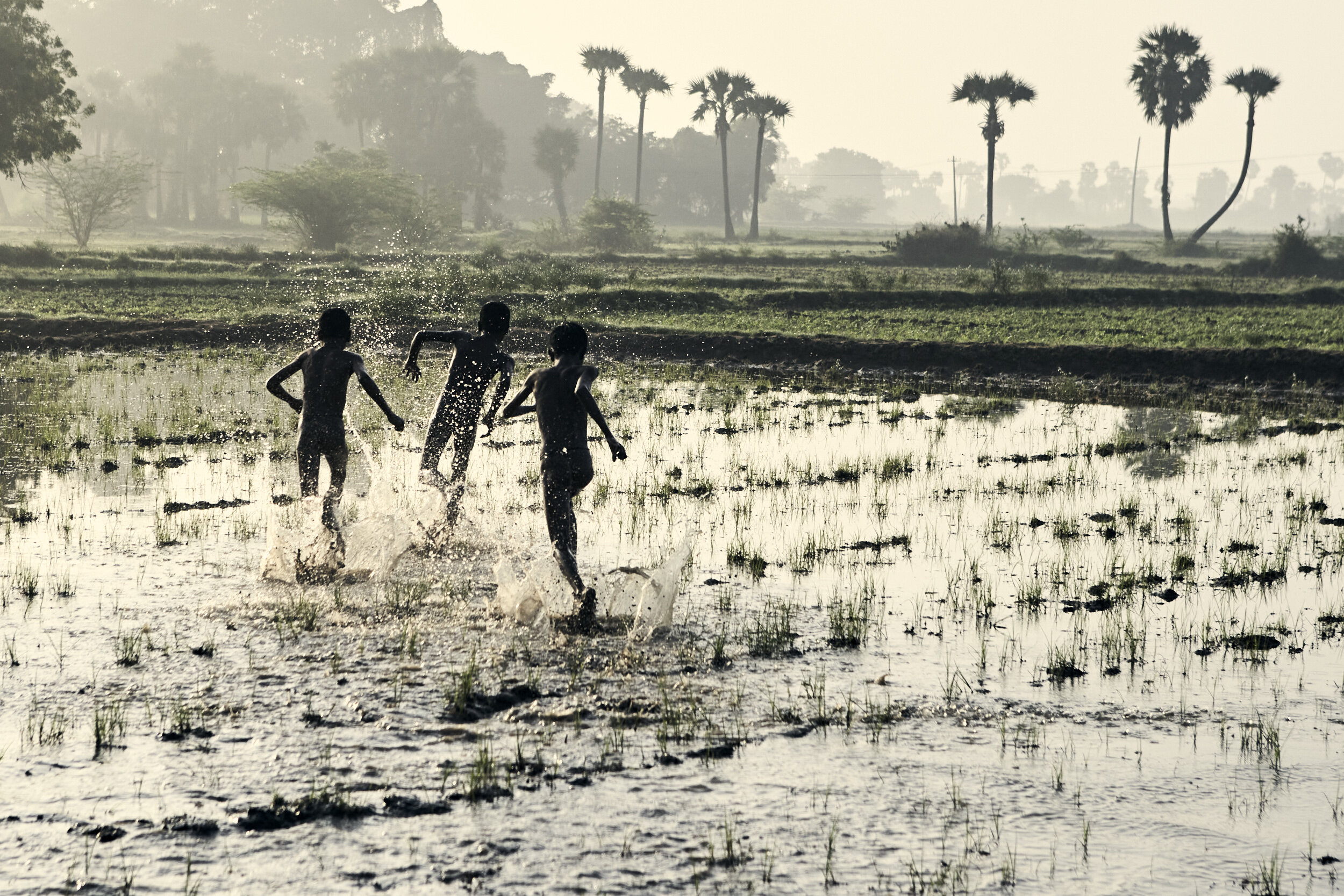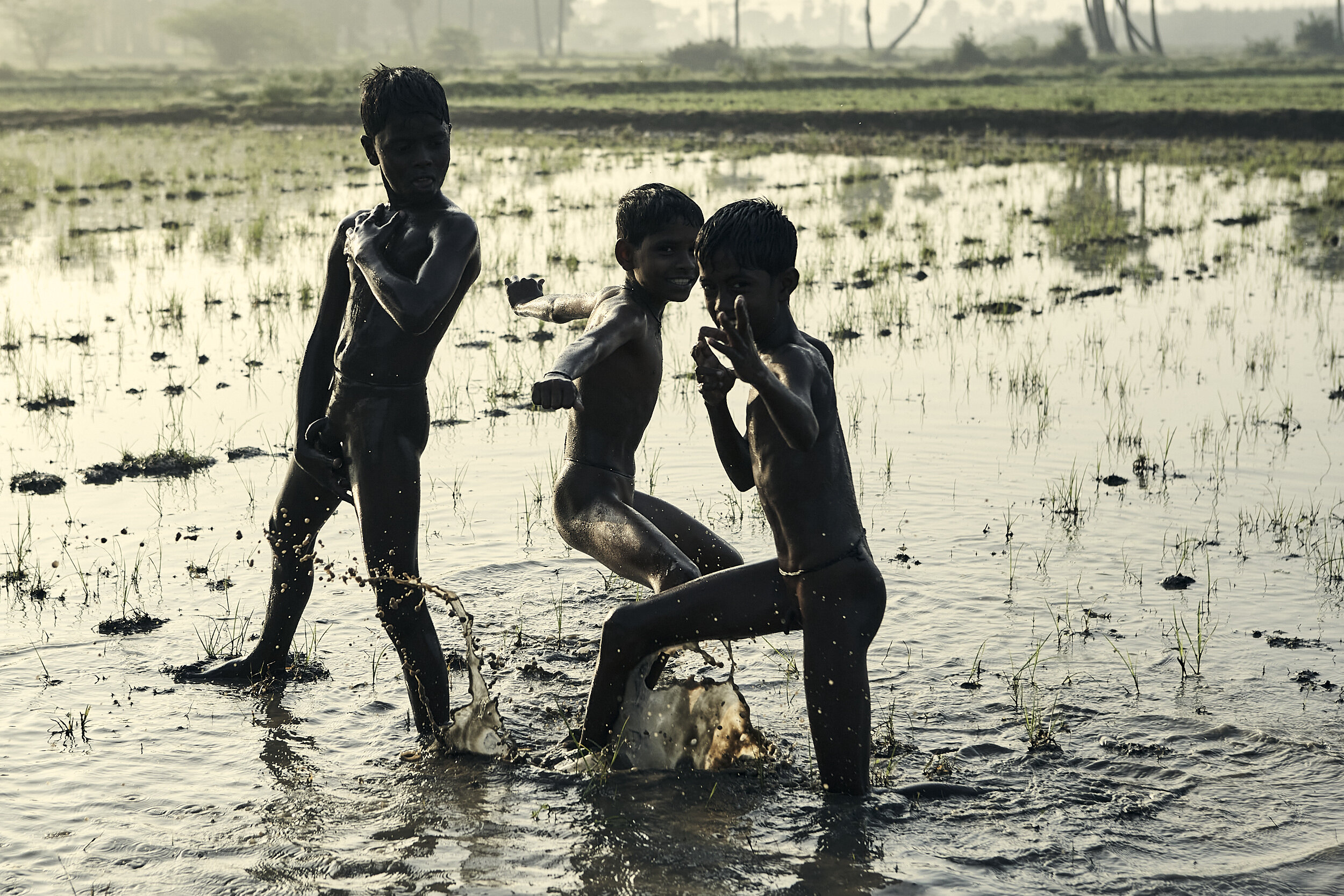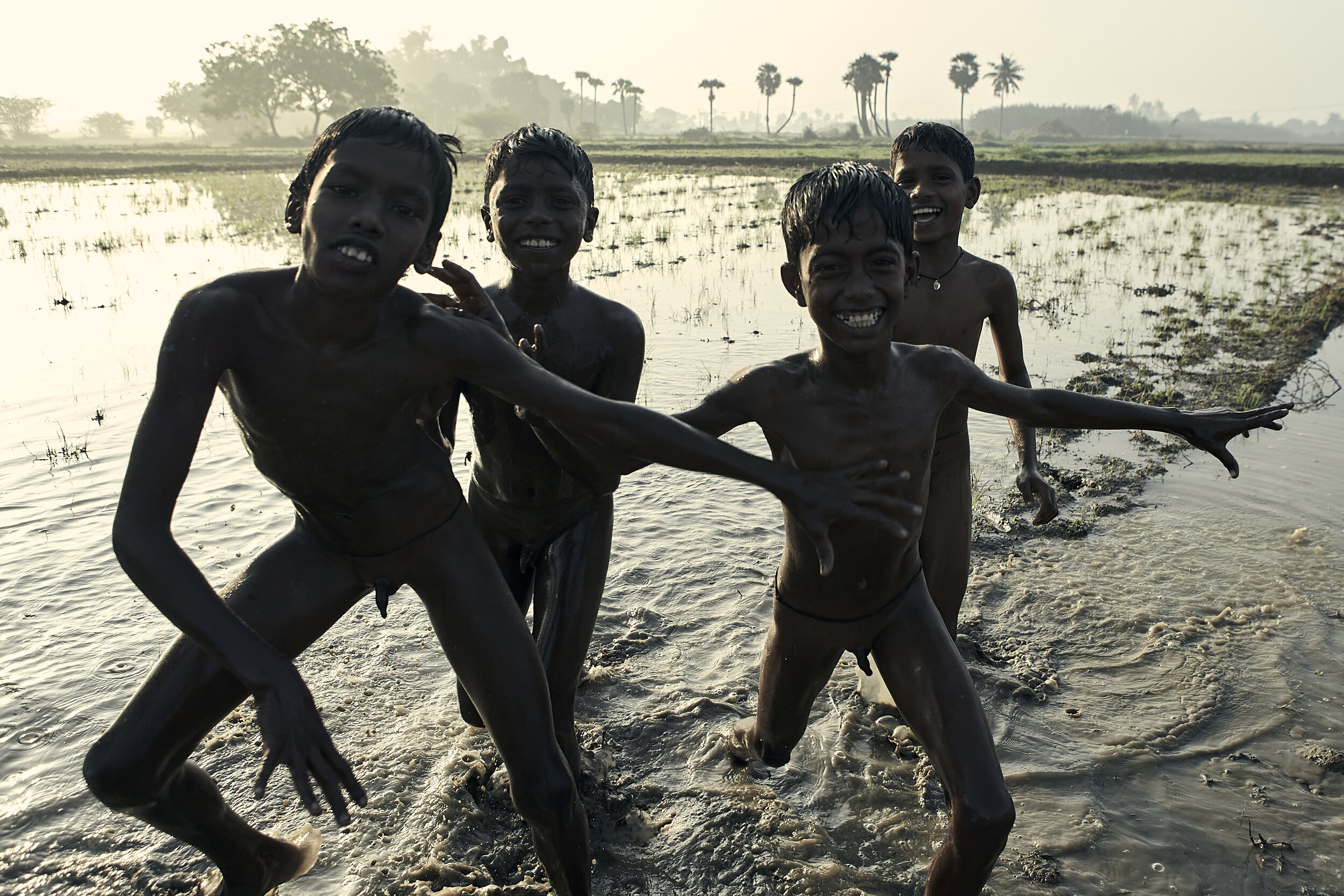La mañana del último día salí en bicicleta muy temprano para recorrer solo Vedanthangal y sus alrededores, un área rural del estado indio de Tamil Nadu.
On the morning of the last day, I set out very early on my bike, alone, to tour Vedanthangal and its surroundings, a rural area in the Indian state of Tamil Nadu.
Había sido un mes muy intenso de trabajo y emociones y la idea de irnos y despedirnos de toda la gente con la que nos habíamos encariñado tanto era a esa hora desgarradora. La noche anterior había sido larga, hubo mosquitos e insomnio, además de la visita inevitable del pequeño ratón de campo. La falta de sueño me instaló en una extraña sensación de irrealidad y me hacía extremadamente sensible.
It had been a very intense month of work and emotions and the idea of leaving and saying goodbye to all the people we had grown so fond of was at that heartbreaking hour. The night before had been long, there were mosquitoes and insomnia, plus the inevitable visit of the little field mouse. The lack of sleep installed me in a strange sense of unreality feeling extremely sensitive.
A lo lejos vi a 4 chicos chapoteando en un campo de arroz. Sus chillidos de excitación se mezclaban con la niebla, que empezaba a disiparse. Rondaban los 10 años y estaban totalmente desnudos. Aprovechaban la salida del sol para encontrarse y divertirse un rato antes de ir a la escuela. Saltaban, se revolcaban en el agua, reían a carcajadas y, desinhibidos, bailaban una danza caótica tremendamente contagiosa. Empaticé enseguida con la vida de niño, con la amplitud de un presente sin horarios ni consecuencias. No fue nada fácil comunicarme con ellos y a la vez sacarles fotos. Mi presencia les excitó muchísimo porque era una presencia inesperada y la cámara profesional de fotos también. Me sacudí el ensimismamiento y un segundo pasé de la quietud total del entorno a verme inmerso en un tremendo caos y griterío. Por un lado no quería dejar de mirar a través del visor y, por el otro, era imposible tomar ninguna foto porque los niños se movían sin parar, me mojaban, tapaban el objetivo con la mano y querían ver enseguida la imagen tomada. A pesar de todo aquel tremendo galimatías, supe de inmediato que esa escena valía mucho la pena. De reojo me di cuenta que sus cuerpos mojados y fibrados de piel oscura brillaban preciosos a contraluz. Me encaramé de un salto a uno de los bordes de la parcela, bordes que sirven para contener el agua que inunda el arroz. Con un gesto les indiqué que hicieran una carrera alejándose de la cámara. Gracias a la altura que había ganado, sabía que sus siluetas negras quedarían recortadas sobre el agua, que en ese momento reflejaba la salida del sol. La luz rasante venía de semicontra, perfecta para resaltar toda la textura del agua, iluminar las gotas y dejar a contraluz los 4 cuerpos casi idénticos. Ese era el instante decisivo, como diría Cartier-Bresson.
En aquel momento pensé que estos niños, sin saberlo, me habían ofrecido la mejor despedida que podía esperar.
In the distance I saw four kids splashing around in a rice field. Their squeals of pure excitement mixed with the fog, which was beginning to lift. They were about 10 years old and completely naked. They took advantage of the sunrise to meet up and have some fun before going to school. They jumped, rolled around in the water, screamed and, uninhibited, danced a chaotic dance that was tremendously contagious. I immediately began to empathize with the life of a child, with the breadth of a present without timetables or consequences. It was not easy to communicate with them and take pictures. My presence excited them very much because it was an unexpected presence and so was the professional camera. I shook off my self-absorption and for a second I went from the total stillness of my surroundings to being immersed in tremendous chaos and shouting. On the one hand, I didn't want to stop looking through the viewfinder and, on the other, it was impossible to take any pictures because the children were moving all the time, wetting me, covering the lens with their hands and wanting to see the image taken right away. In spite of all that tremendous gibberish, I knew right away that this scene was worth it. Out of the corner of my eye, I noticed that their wet, dark skinned bodies shone beautifully in the light. I jumped to one of the edges of the field, edges that serve to contain the water that floods the rice. With a gesture I motioned them to run away from the camera. Thanks to the height I had gained, I knew that their black silhouettes would be cut out of the water, which at that moment reflected the sunrise. The low light came from a semi-contrast, perfect for highlighting the whole texture of the water, illuminating the drops and leaving the four bodies almost identical in the background. That was the decisive moment, as Cartier-Bresson would say.
At that moment I thought that these children, without knowing it, had offered me the best farewell I could have hoped for.
Canon EOS 1Ds Mark III
Canon EF 24-70 mm. / f2.8
ISO 100 1/1600 s f/2.8 50 mm.
Cuando más adelante se nos presentó la posibilidad de hacer un libro sobre el trabajo realizado, el equipo de Multistudio Books y yo coincidimos enseguida en que ésta podía ser la foto de portada. Conceptualmente, la potencia de estos cuatro cuerpos desnudos corriendo al amanecer es insuperable, entrelazados como raíces. Siempre he asociado esta imagen con los caballos que tiraban de las cuadrigas romanas, simbolizando de esta manera el valor que esta fundación da a la infancia y a su educación como motor de cambio para un futuro mejor.
El libro puede adquirirse mandando un mail a Toni Ricart: tricart@multistudio.com
www.multistudio.com
When we were later presented with the possibility of making a book about the work done, the team at Multistudio Books and I immediately agreed that this could be the cover photo. Conceptually, the power of these four naked bodies running at dawn is unsurpassed, intertwined like roots. I have always associated this image with the horses pulling the Roman chariots, thus symbolizing the value this foundation places on children and their education as an engine of change for a better future.
The book can be purchased by sending an email to Toni Ricart: tricart@multistudio.com
www.multistudio.com
VEDANTHANGAL
Vedanthangal está situado en el estado indio de Tamil Nadul, en el distrito de Kancheepuram, a unos 80 kilómetros al sudoeste de Chennai (Madrás). El pueblo consta de cinco pequeñas aldeas en las que viven cerca de 3.700 habitantes. La gran mayoría de vecinos de Vedanthangal se dedica a la agricultura de subsistencia (arroz, forraje, cacahuete y dhal -un tipo de lenteja-) y a la cría de ganado (vacas, cabras y búfalos hembra). El 70% de los habitantes del pueblo son dalits o intocables, una comunidad marginada dentro del sistema indio de castas. Los miembros de esa casta están condenados para siempre a vivir en un estado de extrema pobreza. La mayoría de ellos no pueden poseer tierras y para subsistir han de dedicarse a las labores que rechazan, por indignas, los miembros de las otras castas.
Desde 2005, la Fundació Laia Mendoza trabaja para ayudar al desarrollo de Vedanthangal colaborando estrechamente con su organización local, Laia Foundation. www.laiafoundation.org
Vedanthangal is located in the Indian state of Tamil Nadul, in the district of Kancheepuram, about 80 kilometers southwest of Chennai (Madras). The town consists of five small villages with about 3,700 inhabitants. The vast majority of Vedanthangal's residents are engaged in subsistence agriculture (rice, fodder, peanuts and dhal - a type of lentil) and livestock raising (cows, goats and female buffalo). Seventy per cent of the villagers are Dalits or untouchables, a marginalized community within the Indian caste system. The members of this caste are condemned forever to live in a state of extreme poverty. Most of them could not own land and had to engage in work that members of other castes rejected as unworthy. Since 2005, Fundació Laia Mendoza has been working to help the development of Vedanthangal by working closely with its local organization, Laia Foundation. www.laiafoundation.org
